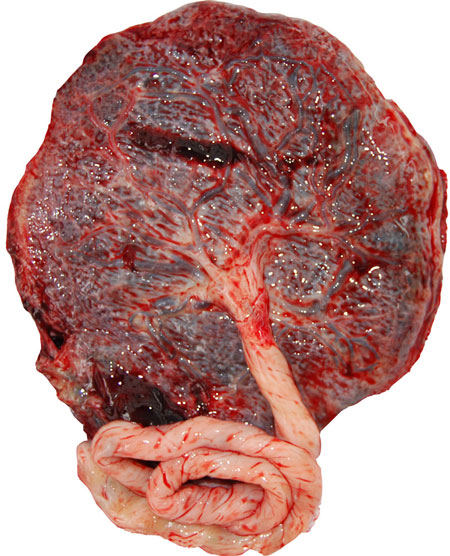 The placenta is the organ which supplies your baby with nutrients and oxygen via the umbilical cord, as well as removing waste products. The placenta is attached to the wall of uterus by many blood vessels. While it can appear quite low in early pregnancy, as the uterus grows and stretches the placenta is typically drawn up away from the cervix (the lower portion of the uterus).
The placenta is the organ which supplies your baby with nutrients and oxygen via the umbilical cord, as well as removing waste products. The placenta is attached to the wall of uterus by many blood vessels. While it can appear quite low in early pregnancy, as the uterus grows and stretches the placenta is typically drawn up away from the cervix (the lower portion of the uterus).
What is Placenta Praevia?
In some cases the placenta remains in the lower portion of the uterus into late pregnancy and may partially or completely cover the cervix. This condition is known as placenta praevia. Placenta praevia occurs in four grades ranging from minor to major:
- Grade 1 – Minor: Placenta extends to lower portion of the uterus but does not reach cervix
- Grade 2 – Marginal: Lower edge of placenta reaches cervix but does not cover it
- Grade 3 – Major: Placenta partially covers cervix
- Grade 4 – Major: Placenta completely covers cervix
What are the symptoms of Placenta Praevia?
The symptoms of placenta praevia are not unique to this condition and in early pregnancy can point to a range of conditions, some serious and some not. However placenta praevia is the most common cause of painless bleeding in the last three months of pregnancy.
It is important to ensure you consult your doctor or midwife if you experience any of the following symptoms:
- Sudden, painless, bright red vaginal loss
- Uterine cramping with bleeding
- Painless vaginal bleeding after sexual intercourse
- Bleeding during labour
What causes the bleeding?
In placenta previa bleeding can occur because, as the uterus grows and stretches to make room for the baby, the placenta is unable to stretch with it due to its low-lying position. This can result in the placenta tearing at the edges. Also, again because of its location close to or over the cervix, sexual intercourse can create an impact on the placenta, producing bleeding. The blood released is your own, not your baby’s.
How will I know I have placenta praevia?
Placenta praevia is generally detected at an 18 to 20 week ultrasound scan, also called a morphology scan. If the placenta is seen to be low-lying, a further scan will be recommended at 34 weeks to reassess the placenta’s location. Keep in mind that only 2 to 5 % of placentas detected as low-lying at the 18 to 20 week scan will be diagnosed as placenta praevia grade 3 or 4 in later pregnancy. This is because the growth of the uterus often succeeds in drawing the placenta up and away from the cervix.
How can I avoid placenta praevia?
There is often no obvious cause for placenta praevia and there is essentially no way to avoid it. Only growth of the uterus can improve the position of the placenta. Conditions which may impact on your likelihood of placenta praevia include:
- scarring of the uterus lining from a previous caesarean, curette or diathermy
- a large placental area, such as when carrying twins sharing a single placenta
- late implantation of a fertilised ovum
- maternal smoking (although the reason why has not yet been determined)
How dangerous is placenta praevia?
You may not bleed at all throughout your pregnancy. However placenta praevia can be potentially life threatening, especially when diagnosed as Grade 3 or 4. Keep in mind that in the event of an uncontrolled bleed, you could lose your entire blood volume in 10 minutes, resulting in death.
Will I have to be admitted to hospital?
Whether or not you need to be admitted to hospital will depend on the grade of your placenta praevia, whether or not you are bleeding, and the extent of the bleeding. Being in hospital will not stop you from bleeding, but it will enable your baby to be delivered more quickly if needed. It can also enable you to receive intravenous fluids, which can assist your body to endure blood loss, and ultimately a blood transfusion if bleeding is severe. If the grade of placenta praevia is minor, and the bleeding has stopped, you may be able to go home.
What kind of precautions do I need to take?
It is important to discuss with your doctor or midwife what precautions you will need to take to best protect yourself and your baby where placenta praevia has been diagnosed. This might include:
Ensuring you stay close to a hospital with access to transport in case a bleed or early labour occurs:
- Avoiding sexual intercourse
- Having regular checks of your haemoglobin level and taking an iron supplement if necessary
- Having your baby monitored with a cardiotocograph (CTG) to make sure they are not distressed. Also to check their heart rate and movement
- Having steroid injections to help your baby’s lungs to mature if you are less than 34 weeks pregnant (to improve your baby’s chances of survival in the event of significant prematurity)
Do I have to have a caesarean?
In some cases women who have minor placenta praevia can attempt a vaginal birth. Speak to your midwife or doctor about the risks involved. If placenta praevia is diagnosed as Grade 3 or Grade 4 a caesarean will be required. With the placenta partially or fully covering the cervix, catastrophic bleeding generally occurs if a vaginal birth is attempted.


Recent Comments